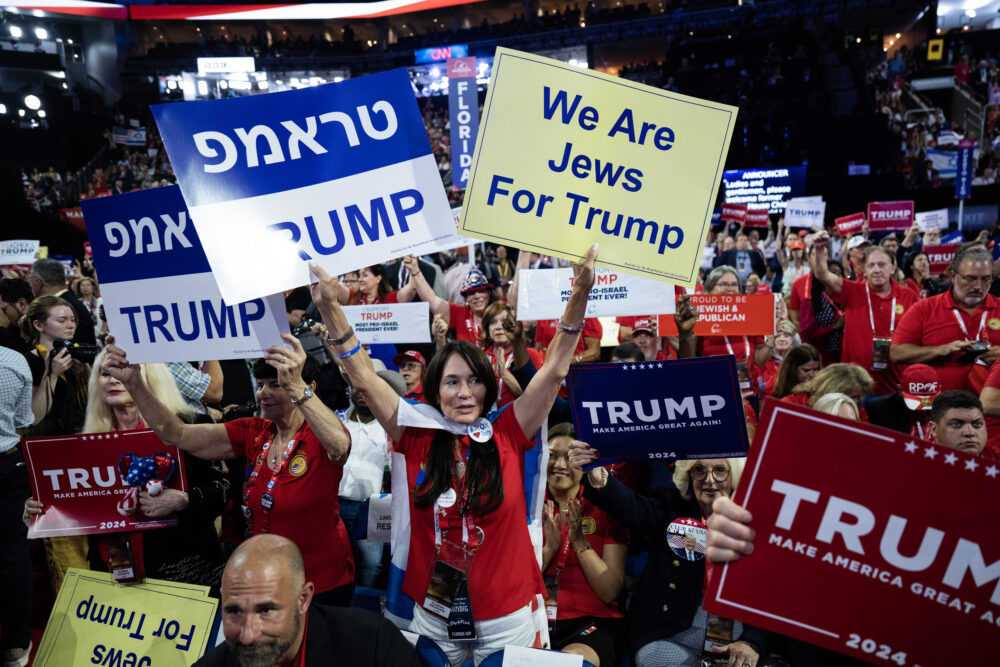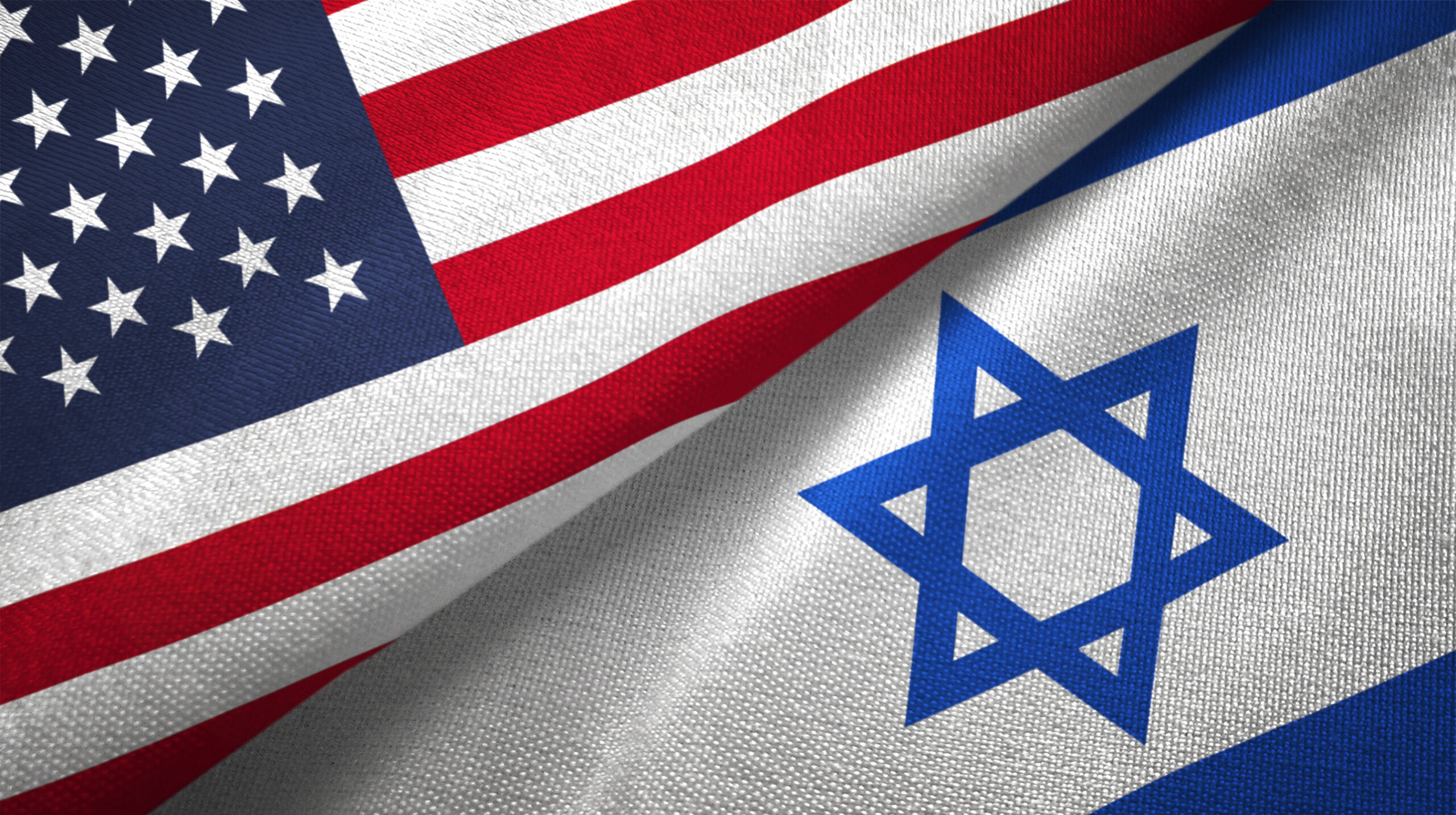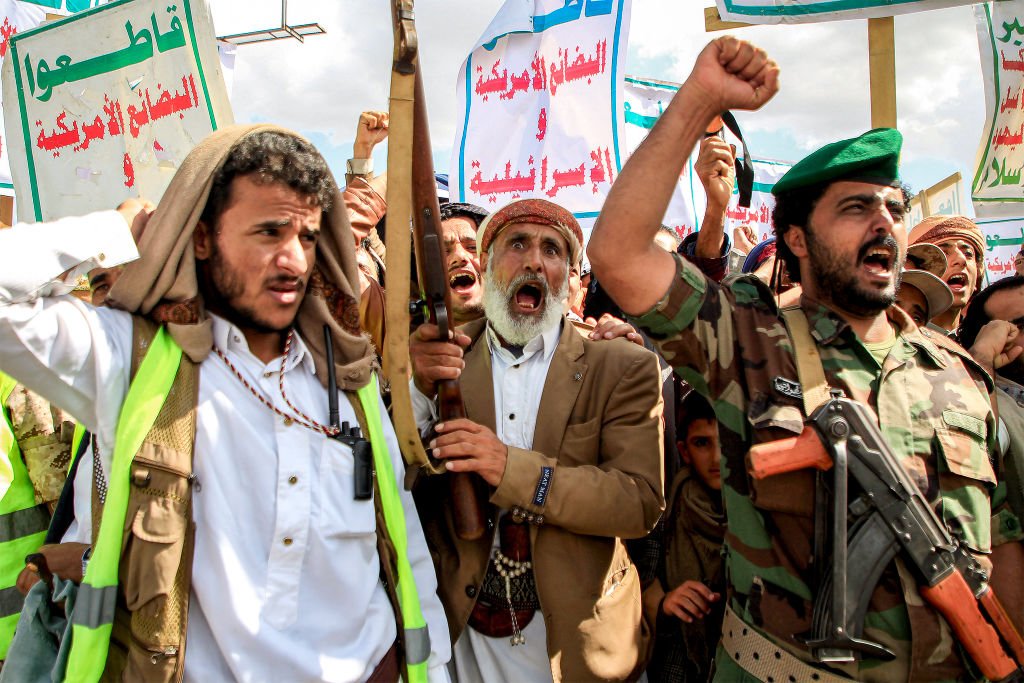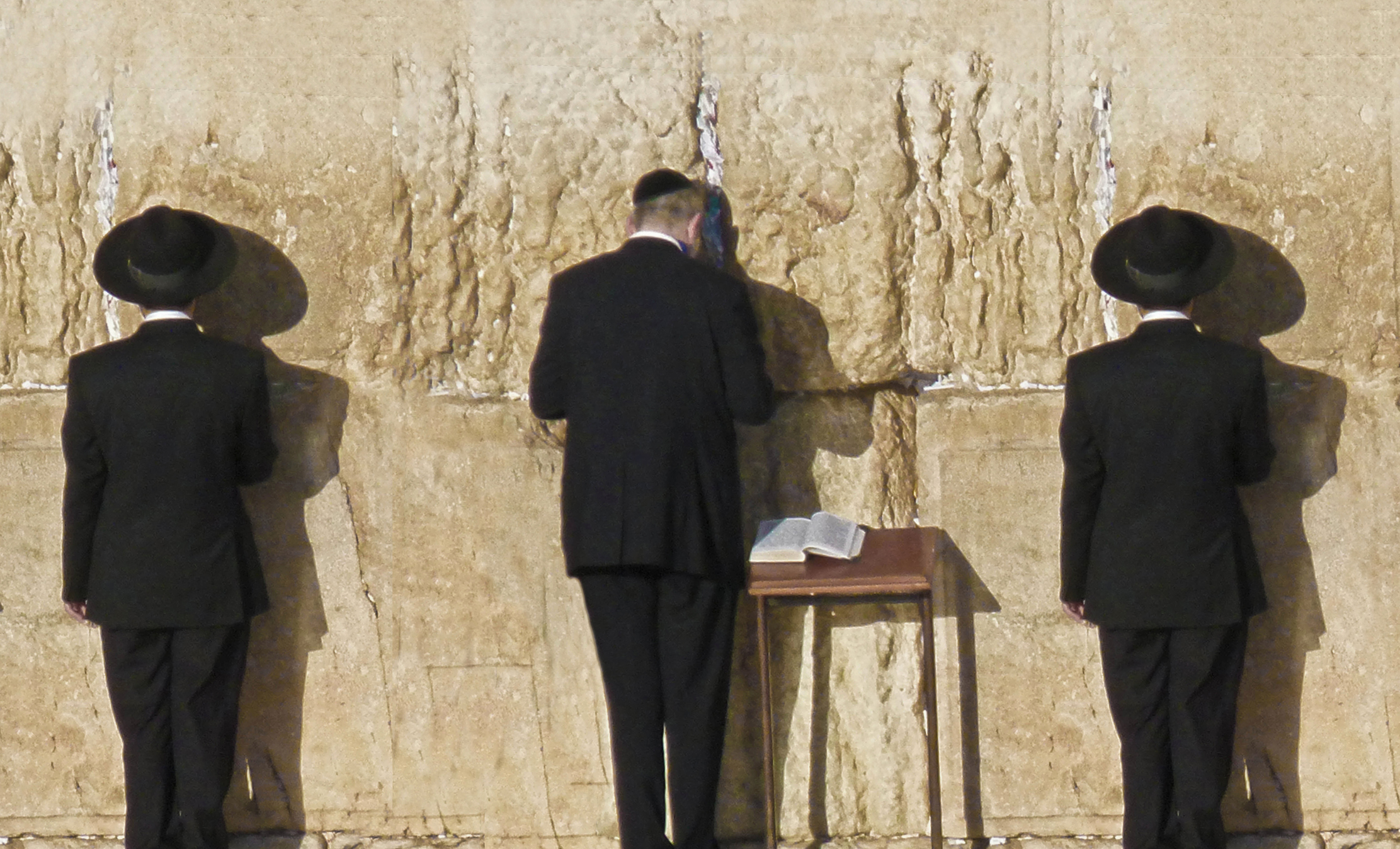The political landscape will never be quite the same.
Palestine Endgame

The invention of permanent refugee status guarantees perpetual war and misery.
The Palestine Liberation movement is heading toward its endgame. Within the next few years, it will either succeed or fail—placing a primacy on understanding what its “success” and “failure” would mean for the world.
The Palestine Liberation movement was founded to ensure that the Middle East could not stabilize as long as it contained a Jewish state. Everything ever done in the name of Palestine has been in service of that goal.
As with many movements, the key to understanding Palestine Liberation is in its founding. Its three most important organizations—UNRWA, the PLO, and Hamas—were quite candid. UNRWA first created the unique “Palestine refugee status” in 1949 to perpetuate displacement. In 1964, the PLO denied the distinctiveness of the Palestinian Arab identity while “safeguarding” it as a Pan-Arab weapon against Zionism. Hamas decried as heretical the creation of a Palestinian national identity in 1988 but conceded its utility in restoring the Caliphate.
But the foundational nature of Palestine Liberation as an anarchic hate movement runs far deeper than organizational charters. By the mid-1940s, the Western powers had considerable experience dealing with the refugee flows inherent in imperial dismemberment. The romantic notion of freeing captive nations from the yoke of imperialism won its first major victory in 1820 in Greece. Within a century, romantic nationalism had dismembered the Ottoman, Habsburg, and Czarist empires. Unfortunately, this anti-imperialist penchant for national self-determination presented a deeply undesirable side effect. Every new state carved out of an empire necessarily trapped a sizable, resentful population that had preferred imperial rule—people sharing ethnic, linguistic, or religious ties with their former imperial overlord rather than with the newly freed nation in whose homeland they now lived. Understandably, many of those thus stranded agitated to rejoin the empire (or its closest successor)—a goal that the empire itself typically shared. The formula for tension and instability was obvious and unavoidable; prominent examples include the Sudeten Germans and the Russians of Donbas.
The solution has been obvious almost as long as the problem to those unafraid of speaking unpopular truths: Resettle the stranded populations within the empire. Winston Churchill, for example, was “not alarmed by the prospect of the disentanglement of populations, nor even by these large transferences,” citing the “disentanglement of populations which took place between Greece and Turkey after the last war” as a model for moving Germans, Poles, and Czechs to stabilize Europe. And Churchill was hardly alone. The world’s preeminent refugee agency, the UNHCR, touts resettlement as “one of the three durable solutions.”
“Disentanglements,” where implemented, have brought unprecedented stability—at a cost. Population transfers are invariably brutal and unfair. They uproot families and communities from homes of long standing. They can also, however, be humanitarian responses to an injustice, resettling refugees who have already fled the destruction of their homes. But even in their most humane manifestations, replete with timely aid and compensation, they remain coercive and disruptive. Today, they are uniformly derided as “ethnic cleansing,” an ugly label for an ugly affair—that immediately removes from consideration a bad option that may nevertheless be the least bad response to a tragic situation.
That contemporary aversion collides with the commonsensical understanding of the benefits of resettlement to create a humanitarian disaster. The emergent policy traps vulnerable, unhappy populations in place until a sufficiently gruesome war forces them to flee—and only then offers assistance. A far more humane policy would push in the opposite direction, seeking relocation to prevent crises and reduce suffering.
In 2024, countries from South Africa to Spain demonstrate their grave concern about Gaza by refusing to absorb refugees. Accepting Gazan refugees, they note correctly, would hurt the cause of Palestine Liberation. It’s hard to think of a stance either less humane or more cynical. It is, however, consistent. When it comes to the Arabs of Western Palestine—and only in their case—relocation and resettlement can never be on the table. Their lives and families are forever captive to the cause.
Today’s Gazans are fourth generation pawns. In 1920, the League of Nations handed Great Britain the Mandate for Palestine—territory corresponding roughly to today’s Israel and Jordan—with the explicit charge of establishing a homeland for its Jewish residents. From inception, it was clear that the liberation of the region’s Jews—even if restricted to the (roughly) 20 percent of Mandatory territory west of the Jordan River—would strand a sizable, deeply disgruntled Arab population. The international community, upon surveying one of history’s most predictably challenging post-imperial disentanglements, decided to exacerbate and perpetuate the problem.
When Israel was able to survive the combined assault of five Arab armies, UNRWA was formed:
unique in terms of its long-standing commitment to one group of refugees…. Palestine refugees, defined as “persons whose normal place of residence was Palestine during the period 1 June 1946 to 15 May 1948, and who lost both home and means of livelihood as a result of the 1948 conflict.” The descendants of Palestine refugee males, including legally adopted children, are also eligible for registration….When the Agency began operations in 1950, it was responding to the needs of about 750,000 Palestine refugees. Today, some 5.9 million Palestine refugees are eligible for UNRWA services.
Nearly 800 percent growth in the number of “refugees,” the concept of hereditary refugee status, and refugee camps nearing their eighth decade, is indeed unique. It’s hard to imagine how the U.N. could have designed an organization better directed toward perpetuating instability and misery.
UNRWA has helped justify the refusal of every Arab state other than Jordan to integrate the Arabs of Western Palestine as citizens—with predictable consequences for regional stability. The Palestine Liberation movement almost overthrew the Jordanian monarchy in 1970. When the agitators fled to Lebanon, they ignited the 1975 civil war. The large community of unintegrated Palestinian workers in Kuwait cheered Saddam’s 1990 annexation; 350,000 of them were deported when the monarchy returned.
It requires serious mental and ethical gymnastics to deny the obvious: Whereas the UNHCR was designed to give a decent life to as many people as possible while promoting stability and working toward peace, UNRWA took precisely the opposite approach in an attempt to reach precisely the opposite goals. UNRWA trapped hapless refugees in a setting designed to promote instability, provoke war, and perpetuate their misery.
Prior to UNRWA, no one had ever seen the Arabs of Palestine as distinct from other Arabs—and certainly never differentiated between the Arabs of Eastern and Western Palestine. In 1915, Sherif Hussein of Mecca, writing to British High Commissioner in Egypt Henry McMahon on behalf of all Arabic speakers between Egypt and Persia, proposed joining the Allied effort against the Ottomans. Two years later, when the Balfour Declaration endorsed the idea of a Jewish homeland in Palestine, it incorporated concerns for the civil and religious rights of non-Jewish inhabitants. Neither Arab nor European sources gave any thought to the national rights of the distinct Arab nations of the Levant for the simple reason that there had never been any such distinct nations.
Nor did such nations ever truly emerge. The Lebanese Civil War of 1975, Iraq following Saddam’s fall in 2003, and Syria after the 2011 Arab Spring highlighted the weakness of those national identities. The moment enforced unity fell, nearly all citizens returned to tribal, religious, and ethnic identities. In 2002, King Abdullah II felt the need to launch a “Jordan First” initiative to promote a Jordanian national identity—80 years after independence. There’s simply no basis for associating Arab national identities with modern state lines.
The same is true for the Palestinians. Building upon UNRWA’s perpetuation of the conflict, the PLO’s 1964 Charter was clear: Palestine “is an indivisible part of the Arab homeland, and the Palestinian people are an integral part of the Arab nation.” As such: “The Palestinian people believe in Arab unity. In order to contribute their share toward the attainment of that objective, however, they must, at the present stage of their struggle, safeguard their Palestinian identity and develop their consciousness of that identity.” The entire “Palestinian identity” was constructed to negate Zionism—the claim of the ancient Jewish nation to self-determination in its historic homeland. The Hamas Covenant of 1988 was even clearer. “The land of Palestine is an Islamic Waqf consecrated for future Moslem generations until Judgement Day.” The PLO thus seeks quasi-imperial Arab rule over the entire Levant, while Hamas seeks an explicitly theocratic Caliphate. The notion of a disenfranchised, historic Palestinian Arab nation was a fiction crafted to win over gullible Westerners.
The “Palestine” that UNRWA birthed and the liberation movement the PLO and Hamas brought to life was never about wedging a third state into the territory that had been Mandatory Palestine. It was always about disruption and genocidal anti-Semitism. In its earliest days, the Arabs who created the movement had hoped to contain the instability within Western Palestine. They failed. Their creation has been a central source of instability and terror for nearly eight decades.
The flood of Middle Eastern refugees across porous Western borders, Western inattention to the integration of new arrivals, radical Islamist funding of universities, and the leftist/Islamist alliance now threaten to destabilize the West. Predictably, the cause of Palestine Liberation plays a central role. Since the Hamas atrocities of October 7, explicitly anti-Semitic actions have exploded across American campuses and cities. Unlike previous protests—as disturbing as some may have been—these transcend “mere” genocidal anti-Semitism and generic anti-Americanism. They’re increasingly brazen in their embrace of terrorists, moving beyond Hamas and the PLO to stand with Hezbollah, Osama bin Laden, and North Korea. They do so with representation in Congress and in most Western governments—notably the newly elected parliaments of the U.K. and France.
The goal of these radicals is clear: No corner of the world may know peace as long as a Jewish State persists. Westerners tempted to dismiss them as idealistic if misguided youth do so at their own peril. The movement for Palestinian Liberation may be history’s single most successful anarchic movement—and it has now arrived on our doorstep.
Governments and people across the Middle East are watching Israel’s wars from a distance, though hardly with detachment. The behavior of most Arab states has remained measured. They understand that Israel is not truly fighting Hamas, or even Iran. Israel is fighting for stability against the forces of chaos. Israel’s crushing of Hamas, then Hezbollah, will embolden the Saudis, Emiratis, and other Arab leaders seeking to deradicalize their people. Anything less will energize the radicals. Moderate Muslim leaders will either radicalize or fall, as radical energy surges across the Mediterranean and the Atlantic.
The Palestine Liberation movement has been gestating since the late 1940s. Its 1960s-era name notwithstanding, the movement has never wavered from its promotion of instability and the expulsion or elimination of the region’s Jews. Though its soldiers may be losing in Gaza, the cause has had an excellent year. It’s gained adherents and influence around the world. It’s nearing its endgame. In the not-too-distant future, it will follow one of two paths.
Along one path, the long-suffering people trapped beneath the “Palestine refugee” label will continue their dispersion, settling mostly throughout the Arab world, where they can integrate easily. The bifurcation of Palestine into an Arab state east of the Jordan and a Jewish state to its west will move forward, as the population exchanges begun in the 1950s reach their logical, necessary, and stable completion. Arab/Islamic radicalism will suffer a major setback, as the forces of deradicalization continue their important and difficult work.
Along the other path, Hamas and Hezbollah will emerge sufficiently intact to claim victory, emboldening their Iranian patron. The global community may forcefully wedge a third state between Israel and Jordan. After a brief pause, additional anti-Israel wars will ignite—with each successive round becoming bloodier and broader than its predecessor. Western sympathizers will invite the rage into their own countries.
Nearly 80 years ago, a coalition of Arab states and the international community inverted every lesson about post-imperial stability to create a class of victims whose lives and families would be held hostage to the cause of eradicating Jewish existence in the historic Jewish homeland. Over the decades, that movement has flourished. It has shifted its alliances—from Nazis to Soviets to Islamists—but its goals have remained unchanged. It has achieved international stature and global significance.
On October 7, Hamas and its supporters launched what they intended to be the final battle. Events of that dark day made clear what many had known but preferred to deny: The Palestine Liberation movement is a fight to the death. The rounds of wars Hamas instigated last October will likely achieve their intended finality. When the dust settles, the Palestine Liberation movement will find itself either buried or victorious, its enemies either bloody or dead. The stakes for the world are indeed high. Let’s hope that the endgame we’re witnessing buries one of history’s most pernicious, anarchic, and anti-Semitic movements and brings about the true liberation of the people it’s trapped for four generations.
The American Mind presents a range of perspectives. Views are writers’ own and do not necessarily represent those of The Claremont Institute.
The American Mind is a publication of the Claremont Institute, a non-profit 501(c)(3) organization, dedicated to restoring the principles of the American Founding to their rightful, preeminent authority in our national life. Interested in supporting our work? Gifts to the Claremont Institute are tax-deductible.
The increasing likelihood of an attack in the U.S. should make us consider how we will answer.
The U.S. should double down on its support of Israel.
Progressive opposition to Israel’s military operation is rooted in racism and antisemitism.
Kiev is desperate for the West to come to its rescue.
Nations have historically looked to usurp Israel’s place in the Divine plan.






